How urban middle-class India eats at home
What is urban middle-class India eating now? Everything! What has changed is that people are looking at what works for them, be it health benefits or personal preference
The apple hasn’t fallen too far from the tree. Indians pretty much put on the plate what earlier generations did but in different quantities and combinations. We still eat with the memories of our past, a time when there was no conception that food essentials – flour, sugars, salt and water – could be processed and would come out of a packet.
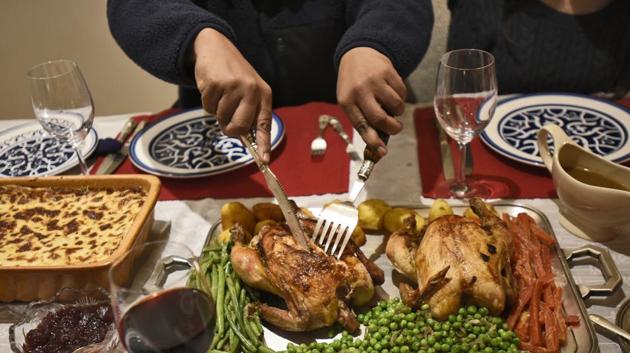
Growing up in Delhi in the ’40s, food writer Madhur Jaffrey in her book Climbing the Mango Trees, recalls tables laid out in utter fearlessness and abandon at her home: breakfasts of three kinds of eggs and bacon; lunches of deep-fried phulkas and bitter gourd stuffed with fennel – all made fresh in the home kitchen. Dinners of ‘English food’ (soup and toast) and ‘Indian food’ (rogan josh, meatball curry and chapatis with dollops of ghee). This was a world still innocent of the power of margarine on the table as food and as idea.
“Till the ’70s, whole-wheat flour was traditionally ground at home or got from the local stone chakki mill,” says nutritionist Ishi Khosla. “Oil used to be cold-pressed. Now we get processed flour and oil. Jaggery, which used to be a breakfast option, has been replaced by refined sugar. Margarine, which people now think is a great low-fat substitute for butter, actually can cause body inflammation. It makes people prone to heart disease,” she says. Has obsessive thinking about what is low calorie and low fat actually overhauled the diet of the Indian family?
“Food, for Indian families, was something to put in the mouth, what was there to think such a lot about it?” asks cultural commentator Sohail Hashmi rhetorically while talking of his childhood. “I had four siblings. My mother had no time for customisation...which food suits which child etcetera. What was good for one was good for all,” he adds.
Meet the dietician
Not any more. The major change in the way we eat now is that people have begun thinking about what suits individuals and not just as a family and doing it with awareness. Many home kitchens are now equipped with the kitchen scale, soup-maker and the air-fryer to monitor / cut down calorie and oil intake.
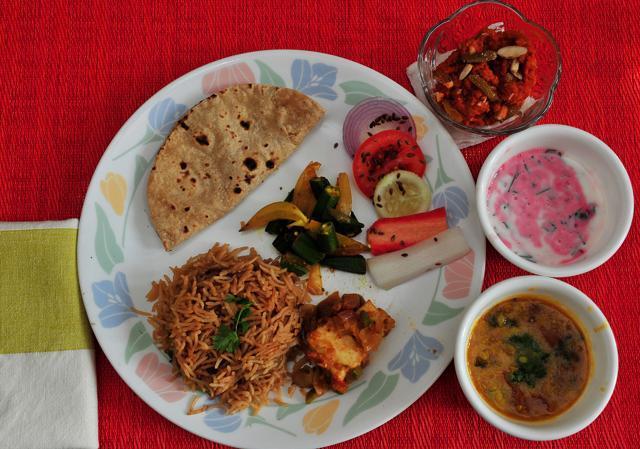
In the past five years, approximately seven out of ten Indians in urban India were on a diet, or consulting an expert, or at least thinking of consulting one, says nutritionist Tapasya Mundhra, speaking from field experience. “Our parents might have had anything random for breakfast such as poha, omelette-bread, jalebi and milk, or all three, but now people, even as they continue their family’s food habits, know what is the fat, fibre and protein component in every meal...what protein to have or not to have at breakfast, what to have after a walk or workout,” says Mundhra.
The timings for main meals have also seen a sea-change, especially when it’s nuclear family with one or both parents, or a millennial child, working in an office outside the 9am-5pm routine. Even breakfasts are being ordered online. “Our earliest order came from Coimbatore at 6am in 2018 and the last one, for dinner, came in at 4:37am from Delhi,” says Srivats TS, vice-president-marketing of Swiggy, one of India’s largest online food ordering and delivery services.
Lunch is usually a packed tiffin; few people return home for this meal. Tea-time is often a repeat of the frugal breakfast – biscuit, tea/coffee with some munch-food in an effort to eat healthy. “The trend of making fresh tea-time snacks centred around the office-going partner’s return home around the ’70s is gone”, says Ishi Khosla. “Now people prefer to eat roasted chanas, makhana, seeds , nuts and dry fruits too.”
Are we eating together?
Dinner is the one ‘family meal’ of the day in the sense that families are making an effort to eat the meal at the same time, if not at the same place. The Mitras of Gurgaon lay the table and eat together, but mainly when they have guests or on Sundays. When the Fehmis of Delhi try to eat together, they may eat different things.
Food columnist and author Anoothi Vishal says dinner is also no longer the last time people are putting food into their mouths. “In cities, people also meet for a post-dinner drink. People wrap up dinner early and then nibble something when they catch up at parties,” she says.
Food trends focusing on plating have made eating in singles a less emotionally fraught affair. “I know people who now plate their food even when they are cooking just for themselves and sit with a glass of wine for dinner after a hectic day at work,” Vishal adds. Staying plugged into people and life rhythms outside the immediate circle of the family with FaceTime and WhatsApp videos even while sitting with a plate of food, may have had something to do with it. And the Indian family has already begun to deal with it.
The Fehmis’ son, Omaiyer, eats his dinner in his room while watching a movie or programme online. Says he: “I’m no slave to the clock. When I feel like eating, I do.”
Four families, four different plates
The following four families do not represent their region or community. Migration, inter-community dining, social media sharing have ensured that diverse food traditions are known and shared by all.
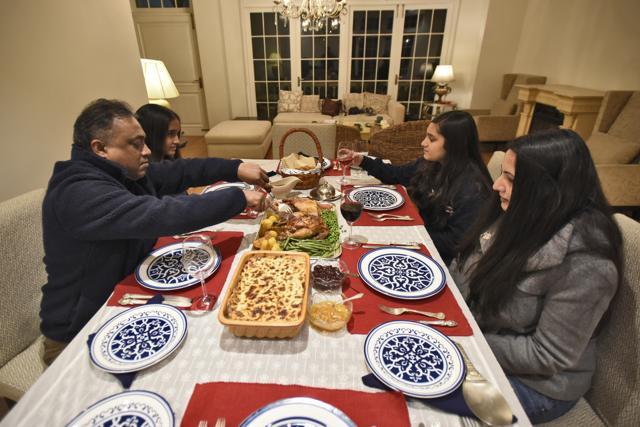
The Mitras of Gurgaon
FAMILY SIZE: Amrita Mitra and Amitabh Mitra, owner of an interior designing company live with their two school-going daughters Ahaana, 15, and Ananya, 13.
MEAL RITUALS: The couple have many things in common, but the glue is surely a love for good food and travel. “Bengali homes anyway have a tradition of planning dinner even while they are digesting their breakfast, and guess we’ve passed this to our kids,” says Amrita.
The Mitras, having grown up in Anglicised homes, eat food made the Bengali or Continental way. Breakfast is usually cereals, porridge, bacon and eggs. “The kids take lunch packed to school; for me, it is usually chicken sandwiches, crumb chops/cutlets with finger chips or the leftover of a roast chicken rolled up in a roti,” says Amitabh. The Sunday lunch is a Bengali one with rice, dal, vegetables and fish. Tea-time is also an elaborate affair. Till a few years ago, it meant tea and cake, now the adults have fruit, lemon /green tea; the kids snack on fruit or granola bars. Dinner is always continental, usually a roast / chop / stew with bread; it sometimes starts with soup but always ends with a sweet / dessert.
MAJOR DIET CHANGES: Since the past two years, non-veg dishes made with ghee /cream (such as butter chicken) / white sauce, no longer appear on the Mitras’ table even when they have guests. Meat/fish is either grilled or roasted now. Junk food for the kids is down to a day a week. “Dinner, the main meal, is now served by 6.30-7pm, earlier it would be between 9 and 10pm. We now enjoy a drink only when we have guests,” admits Amrita, “Cocktails and mocktails are out. We stick to vodka because it is comparatively low-calorie.”
FOOD GROUPS: Animal protein is eaten in some form (it’s usually chicken everyday) and for every meal, barring tea-time. The meat consumption has been constant for the family but certain meats (such as organ meat because it is high in cholesterol) are out or (such as pork) are less consumed now. Carb consumption has also taken a hit. The family is off maida (white flour), they have atta rotis and brown bread. Rice consumption for the four-member family is down to 2 kg a month from 5 kg a month. Paramita Ghosh

The Kohlis of Panchkula
FAMILY SIZE: Anu Kohli, 60, a social worker and full-time homemaker and Anil Kohli, 66, retired from the pharmaceutical sector and now a consultant, are residents of Panchkula, adjoining Chandigarh. Their daughters are married and live in the US.
MEAL RITUALS: The first food of the day is a cup of brewed Darjeeling tea with rusk or home-baked whole-wheat biscuits made with desi ghee. A gap of about an hour precedes a second cup, which is a post-walk-cum-yoga refreshment, followed by fruit or juice. Breakfast options include idli, toast and egg, besan pancakes and poha. Paranthas are consumed once every two weeks. “The breakfast is always a surprise. I never know what she is going to make the next morning,” says Anil.
Lunch is a dal-roti-sabzi affair, complemented with salad and yoghurt, and sometimes rice (plain or pulao). After lunch, Anil likes to go for a round of golf and Anu likes to play her harmonium. When Anil gets back home, they drink a cup of strong Punjabi masala tea and Anu’s biscuits.
Soup, salad and bread seal the deal for the Kohlis at the end of the day. “She makes amazing warm salads to go with the soup,” Anil adds. All the meals are vegetarian, easy on spices, and are prepared with recipes passed down through generations.
MAJOR DIET CHANGES: When the daughters and Anil’s parents were around, the meals used to be typically Punjabi, which meant more of carbs and fats. Paranthas were the primary breakfast item; followed by rajma-rice, kadhi-pakora or chickpeas for lunch and an equally heavy dinner with black gram lentils (maa ki dal). This was around six years ago.
Now the Kohlis have become more calorie-conscious. Even the fritters added to the once-in-a-while kadhi are air-fried. They consume whole-grain flour; sesame and mustard oils and desi ghee have replaced refined oil. They have also limited the consumption of refined sugar, replacing it with cane sugar or gur in dessert preparation. The Kohlis have also introduced a concoction of lemon, turmeric, honey and garlic in warm water, to their morning rituals. Nuts and seeds are added to porridge or taken as snacks. Anu avoids supplements but Anil hasn’t let them go. Their daughters also play a major role in modifying the couple’s diet. “We started using quinoa and couscous on their suggestion,” says Anil.
FOOD GROUPS: Carbs still make the major portion of the meals, although the amount has come down with the introduction of more plant-based options such as quinoa and millet. The main sources of protein are pulses, dairy (homemade cottage cheese and yoghurt), and, occasionally, eggs. There is more fibre and natural sugars in the diet. Meals are balanced and junk is off the menu. Navleen Kaur Khetarpal
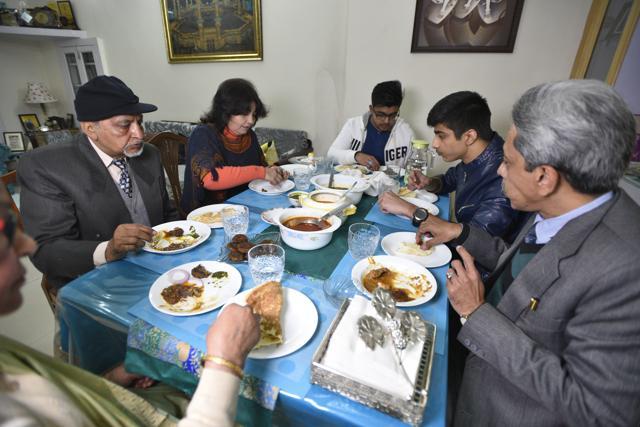
The Fehmis of Delhi
FAMILY SIZE: The Fehmis of Delhi often have Sheeba’s parents Mohammed Aslam, 73, a retired government official and mother Nayyar Jamal, 68, a home-maker and nephew Adnan, 16, staying with them.
MEAL RITUALS: Sheeba comes from a family where two food traditions encounter each other on the dining table. Her father’s breakfast is bread and eggs; her mother eats poori-sabzi. This seems to have kept her open to diverse food choices in her family. Arshad has milk daily, parantha-omelette/poori bhaji /nihari for breakfast, easily accessible because of where they stay, Old Delhi. “But milk was never my scene,” says Sheeba. She has green tea, eggs sunny side up, bread and a handful of walnuts for breakfast. She sautés her breakfast eggs in ghee. “I do this,” she says, “to ensure that the subsequent meal portions stay small. Ghee gives a feeling of satiety”.
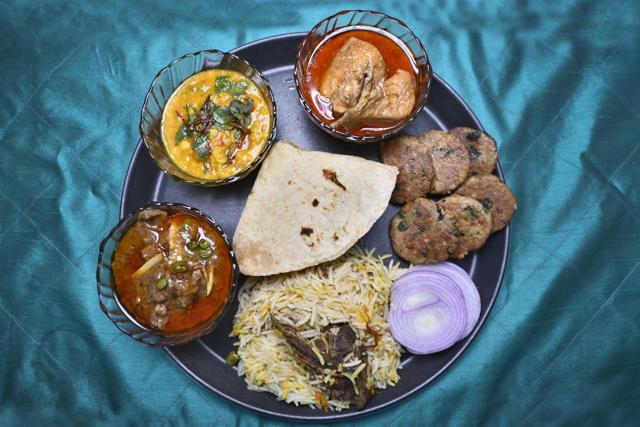
All family members have a non-vegetarian lunch and dinner. Arshad is happy with his tandoori roti-korma/biryani, Sheeba with her salads. “Today, Lebanese, seafood, salads are all easily available at some place near your home – these days, if you want to eat healthy, you can,” she adds.
MAJOR DIET CHANGES: The effort is to go slow on red meat – korma and biryani are made more often with chicken than mutton. Sheeba’s dal meat, a mutton dish, which is a favourite with Arshad, is now made just once a month.
Paneer has become more frequent in the main courses. Arshad has 4-5 cups of tea daily but without sugar. As son Omaiyer skips breakfast, Sheeba tries to make “something filling for lunch like a sarson ka saag and parantha” before he sets off for work to keep him off junk food.
FOOD GROUPS: Protein continues to be a high priority in the Fehmi household; carbs are not absent but less than what was eaten five years ago. Fruit and vegetable consumption in the form of salads is high; dairy consumption is neither high nor low – Sheeba has no milk but has an average intake of paneer; Arshad has a glass of milk daily; Omaiyer has milk and paneer but not daily. Paramita Ghosh

Mr D’Souza of Mumbai
FAMILY SIZE: Frank D’Souza, 37, project manager for operations and content, with a food delivery aggregator in Mumbai
MEAL RITUALS: D’Souza lives alone in the seaside suburb of Bandra and generally has a long workday, so the kitchen in his home is virtually unused. He has coffee for breakfast. “Even a year ago I used to order a fast-food burger with my coffee. But I got tired of the burger,” he says.
With so many food aggregators to choose from, D’Souza depends almost entirely on them. Lunch is ordered, the menu depending on the mood and what is most easily available. “Meat is priority. I prefer meals that come in a bowl so that they can be consumed easily,” he says.
He is fond of biryani so that features on his menu quite often. Dinner is also ordered in, because after a long day of work, D’Souza says he doesn’t want to go into the kitchen and deal with pots and pans. “Sometimes I order biryani, or a big burger from a good place. To me, meals should be hassle-free.” He consumes alcohol two or three times a month and eats at a restaurant four or five times a month when he has company.
MAJOR DIET CHANGES: Before he moved into his current flat about a decade ago, D’Souza was a paying guest with a family. He ate what they ate for breakfast, lunch and dinner. “Home-cooked food was guaranteed. As long as I stayed with them, I had poha or upma in the morning and bhaji twice a day.” After he moved out, he would cook for himself at first, something simple like an omelette. “But as I became busier, I got lazier. So I have gone through a major diet change. People go the healthier way, I went the opposite. Sometimes a colleague brings home-cooked food and I get a share.”
He’s thought of hiring a cook but says having one person cook all his meals would mean they “would taste too similar. I tried a dabba service for some time but I gave it up for that reason. It started to bore me”.
FOOD GROUPS: Meals consist mainly of protein as D’Souza is a big meat-eater. Also a lot of carbs because rice is a component of almost every Indian or Chinese meal he orders. Madhushree Ghosh






